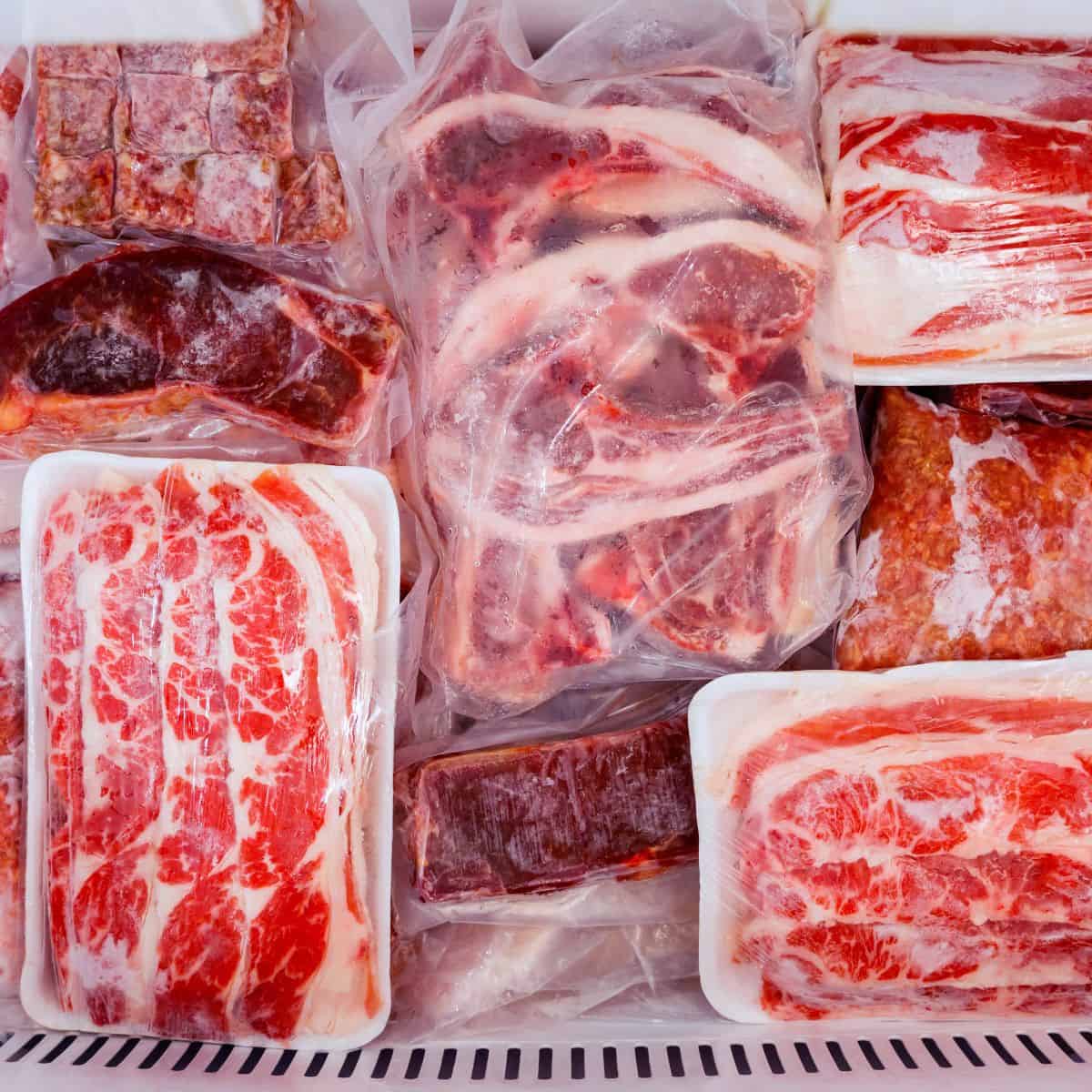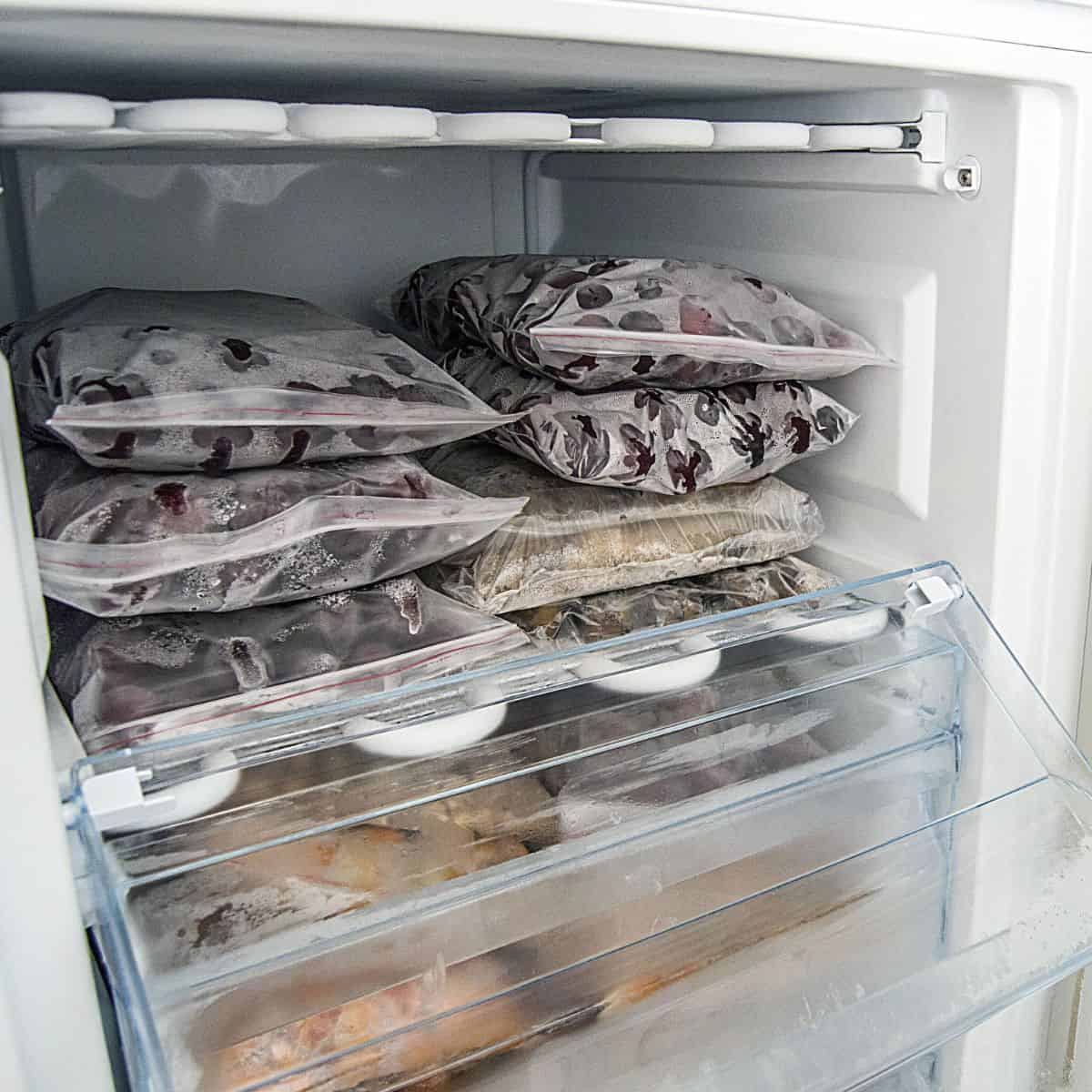If you’re anything like me, you love the convenience of having a well-stocked freezer. Whether it’s preparing for busy weeknights or saving those extra portions of your favorite recipes, mastering the art of freezing food can be a real game-changer. Let’s not forget, freezing food is a fantastic way to preserve freshness, extend shelf life, and reduce waste. Proper freezing techniques ensure that food retains its taste, texture, and nutritional value. Today, I’m excited to share with you my tried-and-true tips for freezing food the right way, ensuring your meals stay delicious and nutritious. To freeze food correctly, start with fresh, high-quality ingredients. Clean, peel, and chop as needed, and consider blanching vegetables to preserve color and flavor. Use airtight, freezer-safe containers or bags to prevent freezer burn and label everything with the date. Remember that not all foods freeze well, so knowing what to freeze and how is key to maintaining food quality and safety.
Foods That Must Be Frozen
Freezing these foods preserves their nutritional value, prevents spoilage, and offers convenience. For instance, having frozen berries allows for quick smoothies, and frozen herbs can be added directly to dishes. Proper freezing ensures food safety and minimizes waste by extending the shelf life of perishable items.
Meat and Poultry: Freezing meat and poultry is essential for long-term storage. Fresh meat and poultry spoil quickly due to bacterial growth, but freezing at 0°F (-18°C) halts this process. To maintain quality, wrap meat tightly in plastic wrap or aluminum foil and place in a freezer bag. Seafood: Like meat, seafood spoils rapidly. Freezing preserves its freshness and prevents the growth of harmful bacteria. Flash freezing is particularly effective, as it minimizes ice crystal formation, which can damage the texture. Berries: Berries have a short shelf life and can spoil within days. Freezing them extends their usability for months. Spread berries in a single layer on a baking sheet to freeze individually before transferring to a bag to prevent clumping. Bread: Fresh bread can become stale quickly. Freezing prevents staleness and mold growth. Slice the bread before freezing so you can defrost only what you need. Herbs: Fresh herbs wilt and lose flavor quickly. Freezing herbs in oil or water, either as whole leaves or chopped, preserves their freshness. Use ice cube trays for easy portioning. Cooked Grains and Legumes: Cooked rice, quinoa, beans, and lentils can be frozen for quick meal prep. They freeze well and retain their texture when reheated. Stock and Broth: Homemade stock and broth can be stored in the freezer for several months. Freeze in small portions using ice cube trays or freezer bags for easy use.
Foods That Must Never Be Frozen
By understanding which foods freeze well and which do not, you can optimize your food storage methods, ensuring that your meals are always fresh, flavorful, and nutritious.
Leafy Greens for Salads: Leafy greens like lettuce, spinach, and arugula become limp and waterlogged after freezing and thawing. The high water content in these vegetables causes cell walls to rupture, resulting in a mushy texture. Store leafy greens in the refrigerator, wrapped in a damp paper towel, and placed in a perforated plastic bag to maintain crispness. Storage: Wrap leafy greens in a damp paper towel and store in a perforated plastic bag in the refrigerator to maintain crispness. Cucumbers and Celery: Similar to leafy greens, cucumbers and celery have high water content and do not freeze well. Freezing causes them to become soggy and lose their crunch. Instead, store cucumbers and celery in the refrigerator, wrapped in a damp paper towel, and placed in a perforated plastic bag. Store cucumbers and celery in the refrigerator, wrapped in a damp paper towel, and placed in a perforated plastic bag. Cream-Based Sauces: Cream-based sauces and soups tend to separate and become grainy when frozen and thawed. The fat in the cream separates from the water, resulting in an unappealing texture. To store, keep cream-based sauces in the refrigerator and consume within a few days. Keep cream-based sauces in the refrigerator and consume within a few days. Potatoes: Raw potatoes do not freeze well because their high water content causes them to become grainy and mushy when thawed. Cooked potatoes fare slightly better but can still develop an undesirable texture. Store potatoes in a cool, dark place, away from direct sunlight. Store potatoes in a cool, dark place, away from direct sunlight, to maintain freshness. Soft Cheeses: Soft cheeses like Brie, Camembert, and ricotta do not freeze well because their texture changes significantly. They become crumbly and lose their creamy consistency. Instead, store soft cheeses in the refrigerator, tightly wrapped in their original packaging or in a sealed container. Store soft cheeses in the refrigerator, tightly wrapped in their original packaging or in a sealed container. Fried Foods: Fried foods lose their crispiness when frozen and thawed. The coating becomes soggy, and the texture is compromised. It’s best to consume fried foods fresh or store them in the refrigerator for a short period. Consume fried foods fresh or store them in the refrigerator for a short period. Eggs in Shells: Freezing raw eggs in their shells causes the eggs to expand and the shells to crack, leading to a mess and potential contamination. To store eggs, keep them in their original carton in the refrigerator. Keep eggs in their original carton in the refrigerator. Mayonnaise and Emulsified Dressings: Freezing mayonnaise and emulsified dressings causes them to separate and become watery. The emulsion breaks down, resulting in an unappealing texture. Store these items in the refrigerator and use within the recommended timeframe. Store mayonnaise and emulsified dressings in the refrigerator and use within the recommended timeframe. Pasta: While cooked pasta can be frozen, it often becomes mushy when reheated. The texture is compromised, and it may not hold sauces well. Store cooked pasta in the refrigerator for a few days or cook it fresh as needed. Store cooked pasta in the refrigerator for a few days or cook it fresh as needed. Fresh Tomatoes: Fresh tomatoes become mushy and lose their texture when frozen. The high water content causes them to become watery and lose their firmness. Store fresh tomatoes at room temperature until ripe, then refrigerate to extend their shelf life. Store fresh tomatoes at room temperature until ripe, then refrigerate to extend their shelf life.
Tips for Success When Freezing Food
Freezing food can be a game-changer for preserving freshness and reducing waste, but it requires the right techniques to ensure the best results. Here are some essential tips for success when freezing food:
Use Fresh, High-Quality Ingredients
Choose the Best: Start with the freshest ingredients possible. Freezing won’t improve the quality of food, so what you freeze is what you’ll get. Clean and Prep: Wash fruits and vegetables, trim meats, and prepare foods as if you were going to cook them immediately.
Proper Packaging
Airtight Containers: Use airtight, freezer-safe containers or heavy-duty freezer bags to prevent freezer burn and maintain flavor. Remove Air: Squeeze out as much air as possible from freezer bags before sealing. This minimizes ice crystal formation. Double Wrap: For items like meats and baked goods, consider double-wrapping with plastic wrap before placing them in a freezer bag.
Label Everything
Date and Name: Always label packages with the date of freezing and the name of the item. This helps you keep track of what you have and ensures you use older items first. Portion Sizes: Freeze food in portions that are convenient for future use. It’s easier to thaw what you need rather than defrosting a large batch and refreezing.
Freeze Quickly
Quick Freeze: Freeze food quickly to preserve texture and flavor. Spread items like berries or chopped vegetables on a baking sheet to freeze individually before transferring to bags. Set Freezer Temperature: Ensure your freezer is set to 0°F (-18°C) or lower to maintain food safety and quality.
Blanch Vegetables
Preserve Color and Flavor: Blanch vegetables by briefly boiling them, then plunging them into ice water. This stops enzyme actions that can cause loss of flavor, color, and texture. Dry Thoroughly: Make sure vegetables are dry before freezing to prevent ice crystals.
Avoid Overloading
Air Circulation: Don’t overcrowd your freezer. Allow enough space for air to circulate around the packages to ensure even freezing. Organize Efficiently: Keep similar items together and place newer items behind older ones. This helps with rotation and quick access.
Maintain Freezer Efficiency
Check Seals: Ensure the freezer door seals properly to keep the cold air in and prevent temperature fluctuations. Defrost Regularly: If you have a manual defrost freezer, defrost it regularly to keep it running efficiently and prevent ice build-up.
Safe Thawing
Thaw in Refrigerator: The safest way to thaw frozen food is in the refrigerator. This prevents bacterial growth and ensures even thawing. Quick Thaw: For a quicker option, thaw foods in a sealed bag submerged in cold water, changing the water every 30 minutes.
Avoid Freezing Certain Foods
High-Water Content Foods: Avoid freezing foods with high water content, like lettuce and cucumbers, as they become mushy. Dairy Caution: While some dairy products freeze well, others, like cream and soft cheeses, can separate and become grainy.
Recipe for Sourdough Starter Cake Decorating – Tips & Troubleshooting How to make Tall Cakes or Extended Height Cakes Cupcakes Tips and Troubleshooting Strawberry Mousse Dessert: A Delicious Treat for Strawberry Lovers
Did you LIKE this recipe? Save it for later. You can find my recipes on Pinterest. Follow me on Facebook, Twitter, and Instagram.Subscribe, and I’ll send you new recipes right to your inbox. Thank you for sharing - Save for later











